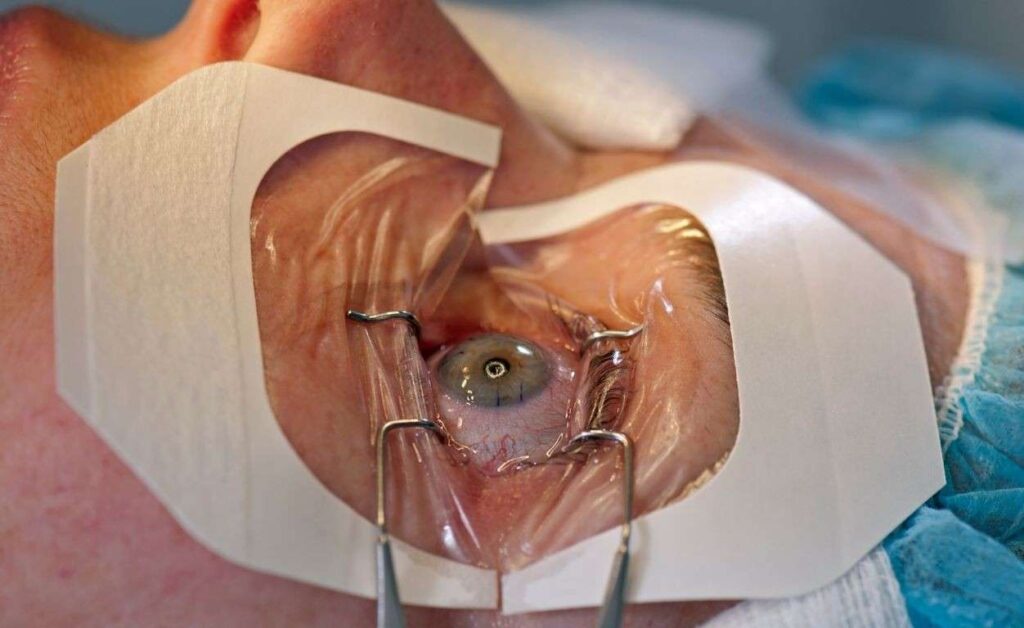Cataract eye surgery is a common and generally safe procedure aimed at restoring vision for those affected by cataracts. Cataracts occur when the lens of the eye becomes cloudy, leading to blurred vision, glare, and difficulty seeing at night. This guide will walk you through everything you need to know, from the diagnosis of cataracts to post-operative care, helping you understand the entire process and what to expect along the way.
What Are Cataracts?
Cataracts are a natural part of aging, affecting millions worldwide. The condition develops when proteins in the lens of the eye clump together, creating cloudiness that obstructs light from passing through. While cataracts can develop in both eyes, they may not progress at the same rate.
Symptoms of Cataracts
Understanding the symptoms of cataracts is crucial for early diagnosis. Common signs include:
- Blurred or cloudy vision
- Difficulty seeing at night
- Increased sensitivity to light and glare
- Double vision in one eye
- Frequent changes in prescription glasses or contact lenses
If you experience any of these symptoms, it’s important to consult with an eye care professional.
Diagnosis of Cataracts
The diagnosis of cataracts typically involves a comprehensive eye examination performed by an ophthalmologist. This examination may include:
- Visual Acuity Test: Measures how well you can see at different distances.
- Dilated Eye Exam: Drops are used to widen your pupils, allowing the doctor to examine the lens and other structures inside your eye.
- Tonometry: Measures the pressure inside your eye, helping to rule out glaucoma.
Once diagnosed, your doctor will discuss treatment options, including the potential for cataract eye surgery.
When Is Surgery Needed?
Cataract eye surgery is usually recommended when cataracts interfere with daily activities, such as reading, driving, or watching television. The timing of the surgery is personal and should be based on your comfort level and the impact of your cataracts on your quality of life.
Understanding the Procedure
Cataract eye surgery is generally performed as an outpatient procedure, meaning you can go home the same day. The most common method is phacoemulsification, which involves the following steps:
- Anesthesia: Local anesthesia is administered to numb the eye. You may also be given a sedative to help you relax.
- Incision: A small incision is made in the cornea, the clear front surface of the eye.
- Ultrasound: An ultrasound probe is inserted to break up the cloudy lens into smaller pieces, which are then removed from the eye.
- Intraocular Lens (IOL) Insertion: Once the cataract is removed, an artificial lens (IOL) is implanted to restore clear vision.
- Closure: The incision usually self-seals, and no stitches are required.
Risks and Complications
Like any surgical procedure, cataract eye surgery carries some risks, although complications are rare. Potential risks include:
- Infection
- Bleeding
- Swelling
- Retinal detachment
- Vision changes, such as glare or halos
Your ophthalmologist will discuss these risks with you and address any concerns.

Preparing for Surgery
Preparation is key to a successful cataract eye surgery. Your doctor will provide specific instructions, but general tips include:
- Arrange for transportation to and from the surgery center.
- Avoid eating or drinking for a specified time before surgery.
- Follow any pre-operative instructions regarding medications and eye drops.
What to Expect on Surgery Day
On the day of your cataract eye surgery, arrive at the surgical center on time. Here’s a step-by-step breakdown of what will happen:
- Check-In: You will be welcomed and given a chance to ask any last-minute questions.
- Preparation: You will change into a surgical gown and lie down on an operating table.
- Monitoring: Your vital signs will be monitored, and the anesthetic will be administered.
- Surgery: The surgery itself typically lasts about 15-30 minutes.
Post-Operative Care
After cataract eye surgery, follow-up care is essential for ensuring proper healing and optimal vision. You may experience some side effects, including:
- Mild discomfort or itching
- Sensitivity to light
- Blurred vision
Immediate Post-Operative Instructions
Once the surgery is complete, you’ll be monitored briefly before being allowed to go home. Here are some important post-operative care tips:
- Rest: Allow your eyes to rest and recover. Avoid strenuous activities for a few weeks.
- Eye Drops: Use prescribed eye drops to prevent infection and reduce inflammation.
- Wear Sunglasses: Protect your eyes from bright light and UV rays when outdoors.

Follow-Up Appointments
Regular follow-up appointments are critical for monitoring your healing progress. Your doctor will check your vision and may adjust your prescription glasses if needed.
Long-Term Care and Vision Health
Maintaining healthy vision after cataract eye surgery involves ongoing eye care. Here are some recommendations:
- Regular Eye Exams: Schedule regular check-ups to monitor your eye health and address any changes in your vision.
- Healthy Lifestyle: Adopt a healthy lifestyle that includes a balanced diet rich in vitamins and minerals, regular exercise, and avoiding smoking.
- Protect Your Eyes: Use UV-blocking sunglasses and protective eyewear during activities that could harm your eyes.
Conclusion
Cataract eye surgery is a highly effective procedure for restoring vision affected by cataracts. With proper diagnosis, preparation, and post-operative care, most patients achieve excellent results. If you or a loved one is experiencing symptoms of cataracts, it’s important to consult with an eye care professional to discuss your options, including the potential for cataract eye surgery.
By following this comprehensive guide, you can be better prepared for the journey from diagnosis to post-operative care. With advancements in technology and surgical techniques, you can regain clear vision and improve your quality of life.

